Yesterday I posted an article on green gadgets those are coming in this year or already have come. Today I am continuing the post where it ended yesterday. I came up with 12 more environment-friendly gadgets that save power and money. Help to save the planet by monitoring how much power you use, cutting the waste and generating a little juice of your own.
The idea is to save a few watts here and there. Reducing the phantom power that a TV consumes when it’s not being used or charging a notebook with a solar panel may not seem like much, but the savings add up. Every watt saved is a watt that doesn’t have to be generated at a power plant and translates into less climate-changing carbon dioxide going out of its smokestack.
PowerFilm AA Foldable Solar Charger: Rechargeable batteries are ecofriendly because they can be reused hundreds of times, but every plug-in recharge means a small amount of electricity is needed to juice them up. PowerFilm Solar Announces Launch of Breakthrough Solar Charger for AA Batteries.It is called the PowerFilm AA Foldable Solar Charger. Ultra Lightweight and Folds to Pocket Size, it’s ideal for the Solider in the field.
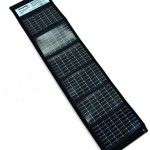
Proprietary Intelligent Charging Circuit Solves Longstanding Solar Charging Problem to Enable Effective Solar Charging of AA Batteries for Mainstream Use. The solar charger is ultra lightweight, thin, and recharges batteries in a highly effective manner in varying sunlight conditions. This proprietary, patent-applied-for product optimizes charging time and charging current while still protecting the batteries from over-charging damage. “Unlike other solar chargers for AA batteries, this new charging circuit does not get confused from variations in current typically seen from a solar panel, said Frank Jeffrey, Chairman of PowerFilm Solar’s parent company Iowa Thin Film Technologies.
The solar charger is ultra lightweight, thin, and recharges batteries in a highly effective manner in varying sunlight conditions. This proprietary, patent-applied-for product optimizes charging time and charging current while still protecting the batteries from over-charging damage. “Unlike other solar chargers for AA batteries, this new charging circuit does not get confused from variations in current typically seen from a solar panel”, said Frank Jeffrey, Chairman of PowerFilm Solar’s parent company Iowa Thin Film Technologies.
The charger recharges 2 or 4 AA rechargeable (NiMH or NiCad) batteries to provide power for any device that uses AA batteries. The charger weighs less than 4 extra batteries and folds to pocket size.
A military version of the charger is being marketed by PowerFilm Solar. The company is partnering with Johnson Outdoors to market a commercial version. “AA battery users in both military and commercial markets have demanded a lightweight solar charger for AA batteries that really works well. Now they have a quality solar product that delivers,” commented Mike Coon, Chief Operating Officer.
Benefits
— Provides lightweight on-soldier power.
— Reduces need for extra batteries.
— Supports rapid deployment and remote locations with quick solar
electric power generation.
— Provides power for emergency needs.
— Tops off batteries to produce maximum run time.
— Highly effective battery charging with breakthrough charging
circuitry.
Features
— 2 Batteries: Full charge in about 4 hours of full sun.
— 4 Batteries: Full charge in about 8 hours of full sun.
— Integrates lightweight, rugged PowerFilm(R) flexible solar panels
directly with fabric.
— Charging lights confirm if batteries are charging or fully charged.
— Rugged construction with 6 grommets for easy attachment.
— Charger adds less weight than carrying 4 extra batteries.
Available from: Various vendors
Price: $56-$79
Estimated annual savings: $1

Etón MicroLink FR160 and Baylis Eco Media Player: Power for your media player or radio doesn’t have to come from a power plant or disposable batteries. Cranking a handle for a few minutes can power the $30 Etón MicroLink FR160 radio (top) and the $209 Baylis Eco Media Player (bottom). They are a bit bulky, but they can let you boogie or listen to All Things Considered while others are looking for an outlet.
The MicroLink radio weighs 8.5 oz. and can grab AM, FM and Weather Band programming, while the 5.9-oz. Eco plays digital audio from its 4GB of internal memory and or its SD flash card slot. The Eco can also tune in FM stations and display images and video on its 2-in. color screen. Both gadgets have an LED flashlight and speaker, but they sound much better with headphones.
Hands-on reviewing takes on a new meaning with these wind-up entertainers, which have power handles that cleverly fold flat and pull out for use. It takes 2 minutes of cranking the MicroLink to get 15 minutes of radio time, while a minute of winding the Eco translates into an hour of playtime.
Both devices work as phone chargers as well — 15 minutes of winding the Etón MicroLink radio nudged the battery in my Sony Ericsson W580 up one quarter of a charge. The MicroLink also has a small solar panel to augment the cranking on a sunny day.
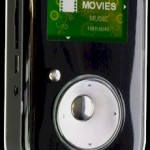
Crank-powered gadgets were originally developed for emergencies or for areas where electricity is difficult or impossible to access. However, they have their uses for the rest of us as well — they can not only save you $1.28 a year versus rechargeable players and radios, but they also have the unintended benefit of providing a mild aerobic workout every time the battery runs down.
Etón MicroLink FR160
Available from: Multiple vendors, sometime in April
Price: $30
Estimated annual savings: $1.28
Baylis Eco Media Player
Available from: Real Goods Solar Inc.
Price: $209
Estimated annual savings: $1.28
Belkin Conserve Energy-Saving Surge Protector: Look around and count the number of LEDs glowing in your home when all the other lights are out. These represent printers, TVs and other electronic gadgets that aren’t being used. Each of these “quick start” devices uses its share of what’s called phantom or vampire power.
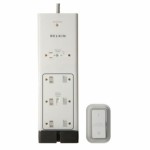
Belkin International Inc.’s Conserve Energy-Saving Surge Protector can turn them all off at the source. On top of two outlets that are always powered, it has six outlets that are controlled by a handheld wireless remote control. Flip the switch, and the power is turned off, period — no more phantom power. The remote control has a 45-foot range and can be hung on the wall next to your light switch so that first thing in the morning, everything gets turned back on.
In a typical small office that operates eight hours a day, the Conserve Energy-Saving Surge Protector can save at least $15 a year by cutting off the phantom power to a 15-in. LCD TV, coffee maker, scanner, microwave and a DustBuster rechargeable vacuum. That means the $45 strip could pay for itself in about three years. After that, all that green goes right into your pocket.
Available from: Belkin International Inc.
Price: $45
Estimated annual savings: $15.40
Solio Magnesium Edition charger and HYmini Deluxe: The Solio Magnesium solar charger (top) and HYmini wind generator (bottom) let you forget about outlets and AC adapters for small electronic devices such as cameras, music players and cell phones.

How often has your phone died out on the road traveling and you are absolutely nowhere near any sort of electrical outlet? Then, you realize you have to call the hostel to confirm you reservation or phone a friend to meet for dinner. Hell, how many times have you just been away from your house and had your phone die when you are nowhere near a charger and need to make an important call?
The Solio Magnesium Edition charger is specially designed with the serious adventurer in mind (serious adventurer with a cell phone). It combine efficient solar panels and a high capacity battery power to collect and store power. An hour of sunshine will allow you about 20 mins talk time on your cell phone or play time on your iPod, which is actually quite a good conversion rate for a device like this. A full charge on this charger will also charge a typical cell phone more than twice or give 20 hours of MPS music. just 1 hour of sunshine = 20 minutes talk time or 50 minutes of MP3 music.
This device also stores power, so you can charge your device at any time of the day or night. You can even plug it into to wall for a charge later on down the road when you know you’ll be away from electrical outlets.
Your Solio includes:
o Charging Cable for iGo® tip system
o Female USB Cable (powers iPods and the original iPhone*) o iGo Motorola Razor tip
o iGo LG Chocolate tip
o iGo Nokia tip
o iGo Samsung tip
o iGo Blackberry tip
o Pencil
o Solio Drawstring Hemp Pouch
o Universal Wall Adapter
Hymini Deluxe Wind and Solar Power Generation Kit . This Deluxe package come with the capability to collect power from A/C, USB, Solar and Wind sources. A 1200mAh rechargeable battery is built in. Also has build in LED lights to function as a mini flashlight.
The USB port on the side of the Hymini can be used to recharge the Hymini internal battery or in ‘reverse’ to charge USB compatible devices like iPod, Cell / Mobile phones, GPS or other devices.
The Hymini USB 2.0 output is 5V max and between 200mA ~ 850mA depending on the device. The side of the Hymini has a switch with 3 positions:
1. Charge (accept power charge),
2. LED Flashlight Mode
3. Battery (provide power to devices)
The HYmini comes with a built-in Lithium-ion battery to sore any electricity you generate. You can also charge it up via the 110v jack.
Solio Magnesium Edition charger
Available from: Better Energy Systems Ltd.
Price: $170
Estimated annual savings: $3.53
HYmini Deluxe
Available from: Miniwiz Sustainable Energy Dev. Ltd.
Price: $75
Estimated annual savings: $3.53
nPower Portable Energy Generator: Can’t bear to take an elevator for a floor or two? Hate cabs and like to walk? In the near future, you may be able to turn this inability to sit still into usable power. Several kinetic-energy generators are on the way that will be able to harness walking to charge a phone, music player or camera.
None are on sale yet, but Tremont Electric Co.’s nPower Portable Energy Generator, or PEG, could be available by fall for $150. The 9-in.-long tube will go in your bag or attach to a belt clip or arm band, and it will be able to convert about 1.25% of your motion — walking, jogging or just going up or down stairs — into usable electricity.
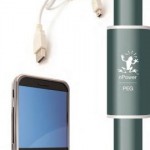
Inside the tube is a movable magnet that generates up to 4 watts, perfect for charging a small digital device. All it will take is about an hour of walking a day to charge an iPod, according to Tremont Electric, potentially saving about $1.28 a year compared with charging the music player. At that rate, you’ll have to do a lot of walking to get it to pay for itself — which, if you’re looking to lose some weight, is not that bad an idea.
The PEG is 9 inches by 1.5 inches, weighs about 9 ounces, and is made of recycled materials. The PEG isn’t a battery, so users can not store their kinetic energy to be used for charging later. Instead, it’s more of a kinetic energy real-time converter that must be plugged in to the device as it’s moving for the kinetic energy to be transferred as electricity immediately to the device.The PEG, which has a standard USB 2.0 output, is compatible with 90 percent of portable electronic devices including MP3 players, GPS units, and digital cameras, according to Tremont Electric. (The compatibility list includes BlackBerry, iPhone, iPod, LG Chocolate, Magellan GPS, Nintendo DS Lite, Palm Treo, and most cell phones from Motorola, Nokia, Samsung, Sanyo, and Sony.
Available from: Not available yet
Price: $150
Estimated annual savings: $1.28
D-Link DGS-2208 switch: At a power draw of just a few watts, I would not have thought that networking gear uses enough power to make conservation worth the effort. Well, I’m here to say that I was wrong: D-Link Corp.’s DGS-2208 8-port gigabit switch hardly wastes a watt.
Odds are that your home network is used for only about half the day. The rest of the time, it does nothing but sit around with its LEDs flashing and millions of packets flying back and forth to make sure that everything is still connected and be ready for the first byte to come through. The difference is that the DGS-2208 is smart enough to shut down LAN connections as they stop being needed — like a PC that has gone to sleep — and tune the signal to the length of the cable.
With eight active connections, the DGS-2208 uses the same 6 watts as a traditional eight-port switch, but its power draw drops to 2 watts when its connections are idle. All told, the $63 switch can save $2 per year compared with a conventional switch. Well, it’s a start.
Available from: D-Link Corp.
Price: $63
Estimated annual savings: $2.42
HP Color LaserJet CM2320n: Putting images and words onto paper has gotten a lot cheaper and greener with Hewlett-Packard Co.’s Color LaserJet CM2320n multifunction printer (MFP). The first color laser MFP engineered from the start to be a power miser, the CM2320n puts efficiency first with redesigned motors, power supply and fuser. The scanner is illuminated with low-power LEDs.
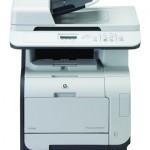
Together, these components cut the printer’s power draw by half when it’s churning out pages and even more when it’s not being used. While idle, the printer uses only 5 watts — about a third of the power draw of other color laser printers — yet, according to HP, it can deliver its first page in 16 seconds. Assuming you print about 50 pages a day, the can cut your power bill by $10 over a year. The more you print, the more you save.
The best part is that this savings doesn’t cost more up front because at $599, the CM2320n is priced about $100 less than similar business multifunction printers.
Available from: Hewlett-Packard Co.
Price: $599
Estimated annual savings: $9.68
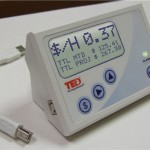
The Energy Detective (TED): Knowledge is power, and it’s impossible to calculate power savings without knowing how much electricity is used. For those with a smart power meter, it’s easy. For the rest of us, there’s The Energy Detective, better known as TED.
The $145 device has two parts: a sensor that clamps onto your circuit breaker’s incoming power cable and a remote display. The sensor monitors how much power is being used and sends the data over the building’s power lines to the display screen; the screen needs to be within 150 feet of the sensor to work.
The small screen can show power use and cost in real time as well as totals for previous months. It can help you figure out which saves more energy: turning the AC thermostat up a degree or unplugging the TV when it’s not being used. The optional $45 Footprints PC application analyzes this data, looking for trends that could translate into additional savings.
How much TED can save depends on how deeply you look at your consumption, but realizing you have a problem is the first step to dealing with it.
Available from: Energy Inc.
Price: $145
Estimated annual savings: Depends on use

Vizio SV470XVT HD display: As TVs and monitors have gotten bigger, their thirst for electricity has risen as well, with some flat screens sucking down as much as 600 watts of power. Thanks to some clever design work, Vizio Inc.’s 47-in. SV47OXVT display uses just 235 watts, or about as much as the typical 42-in. LCD display consumes. When it’s in sleep mode, it uses only 5 watts — about what a child’s night light consumes — or one-third that of the typical display of its size.
At $1,300, the Vizio unit is about what you’d expect to pay for a display of this size, and it includes goodies such as a bright HD screen, a 120-hertz imaging engine, tuners for both analog and digital broadcasts, and more input connections that you’ll probably ever use. If you watch about four hours of TV or DVDs a day, it can save $35 a year in power costs.
Available from: Vizio Inc.
Price: $1,400
Estimated annual savings: $35
Voltaic Generator solar bag: The sun generously bathes the earth in abundant light, but other than the minuscule portion that is currently captured, most isn’t being used to generate energy. Voltaic Systems Inc. wants to put an end to that with its line of solar-powered notebook bags and backpacks.
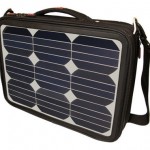
Capable of charging a notebook, cell phone or other gadget, the 4.5-lb. Voltaic Generator case ($499) can be your own personal power grid on the go. On the outside is a rigid 15-by-10-in. solar panel that can grab up to 15 watts of power on a sunny day to charge its 58-watt internal battery. I charged it for six hours on a sunny day, and it was able to start a Lenovo ThinkPad X300 with a dead battery and raise the notebook’s charge level to 50%.
The generator comes with a slew of adapters for charging a variety of phones and notebooks, and it could save about $20 (compared with plugging the notebook into the wall every night). And keep in mind the amount of sunshine in your area — it’s probably a better bet in Phoenix than in Portland.
Available from: Voltaic Systems Inc.
Price: $499
Estimated annual savings: $20
That’s the last product I got so far. Upon the views, if you can afford it & sacrifice something, why not go for green while you’re at it? At least try anyone, then evaluate.
I want to know your feedback, if you like it please comment here or mail me: aguntuk.aguntuk@gmail.com. You can also mail me regarding new green products & technology.
Sources: ComputerWorld.com, PowerFilmSolar.com, Gizmag.com, Belkin.com, Solio.com, GreennPower.com, Reviews.CNET.com

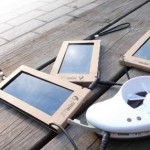
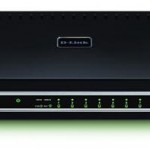

Hey, I’ve been browsing this blog for a while and have a problem, maybe you can help… how do I add your feed to my rss reader as i want to follow you? Thanks.
Awesome post! It was very inspirational, so I appreciate your hard work! I will make sure to share this with a few good friends who I know would like it.